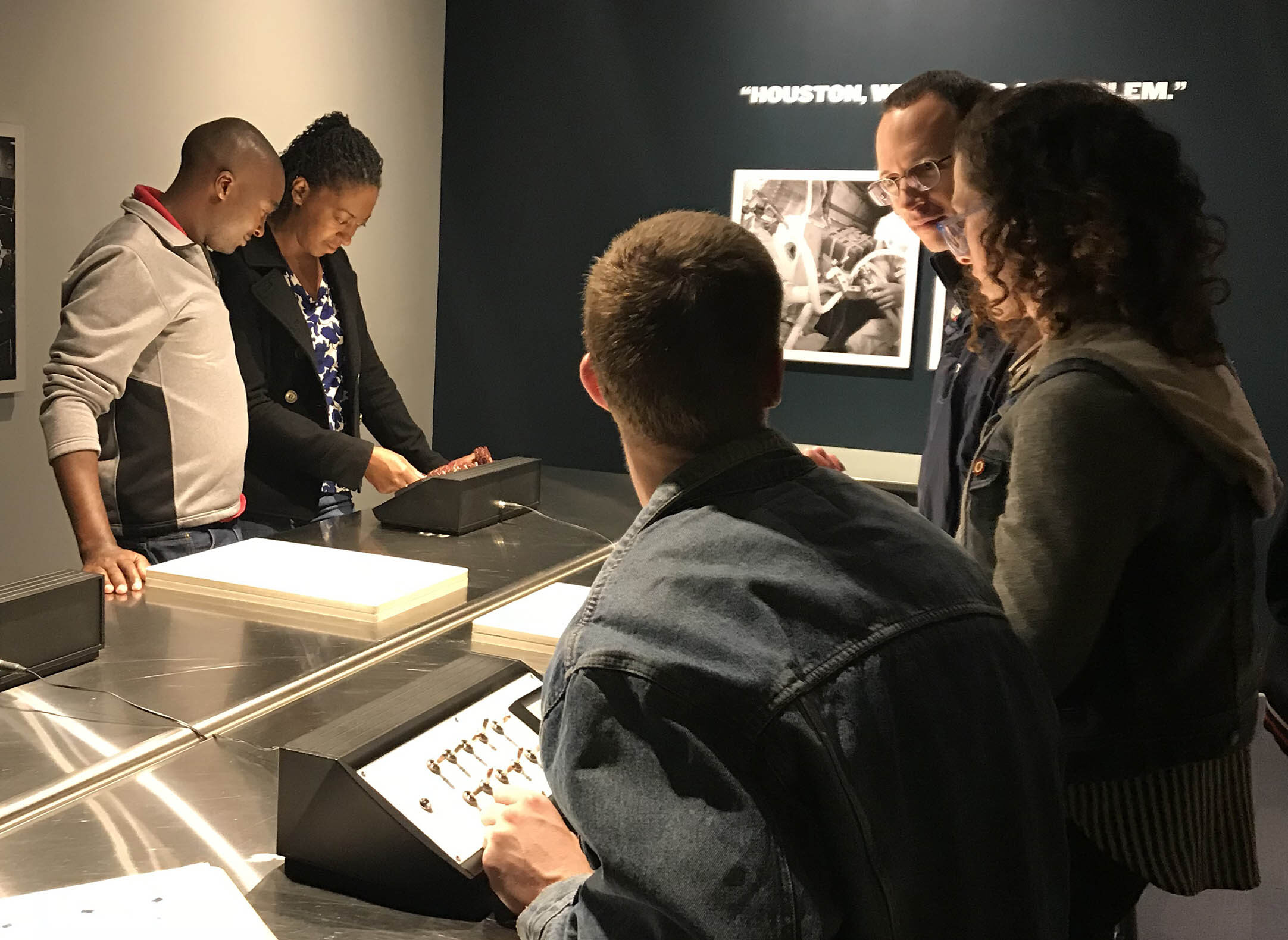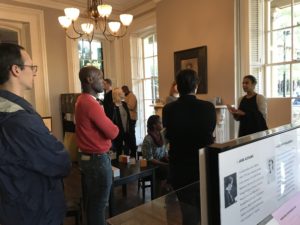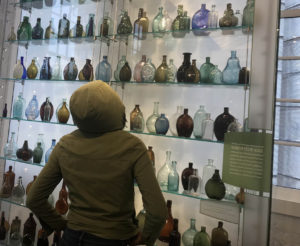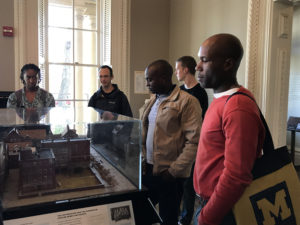
The Museum Studies Program 2017 Cohort at the Adler Planetarium in Chicago
By working on hands-on projects, studying museum history and theory, hearing from professionals in the field, and more, the Graduate Certificate Program in the Museum Studies offers students the chance to understand how museums play a vital role in people’s relationships with the social and natural environment in which they live.
The Museum Studies Program offers an interdisciplinary graduate certificate program that takes a perspective of applied theory or critical practice in the study of museums.

Jane Adams Hull House Museum, Chicago
“Our students come from across the university, and from 11 different colleges,” said Carla Sinopoli, Director of the Museum Studies Program, Curator at the Museum of Anthropology, and Professor in the Department of Anthropology. “Everyone comes together with their interests in museums, academic work, or artistic work. For us as teachers, it’s amazing to be in the room with people from such broad and diverse perspectives and backgrounds.”
The program is unique in its small cohort size and diversity of students. Accepting only 12 students a year, it fosters a sense of community between the students.
“The program becomes a real home away from home for students on campus,” said Bradley Taylor, associate director of the Museum Studies Program. “There is a high level of collegiality among the students, and they socialize and maintain relationships with each other as they move ahead in careers, despite their different fields and disciplines.”
From the first day itself, there’s a large diversity of topics covered. The program works hard to engage its students from the beginning to the end, Taylor said.

Students visit the Glass Gallery in Greenfield Village.
Student come in from different fields of study, which gives them a specific area to concentrate on within the program. Graduate student Emma Sachs found the diversity of educational backgrounds in the cohorts to be important to their discussions and experiences.
“Our seminars were always interesting because you learn about perspectives you’ve never learned about before. Everyone’s experienced in something different, which makes for intriguing conversations and debates.”
The program also requires a practicum experience, in which the students spend three months working at a museum. Students may help create and update exhibits, improve collection care, develop strategies to attract more visitors, or more. U-M has partnerships with more than 60 museums, with recent students making their way to Chicago, Los Angeles and Houston, among others.
Sinopoli said they ask their students to be realistic with the resources and capabilities of the institutions in which they are working. In doing so, the students can create meaningful solutions that are possible at the places they work.
For graduate student Catalina Esguerra, the practicum experience gave her insights on future career ideas.
“Working at the Museum of Fine Arts in Houston really sparked an ember into a big flame in terms of career exploration and pursuing public scholarship and humanities as a job after graduating from PhD. It really made me start thinking about other spaces of belonging that I could pertain, and helped me start contacting people within university who are asking the same questions.”

Jane Adams Hull House Museum, Chicago
Sachs also traveled far, making her way to Los Angeles to work at the Getty Villa, a museum dedicated to the arts of the ancient Mediterranean world.
“Never before did I have an experience where it was so easy to get up and go to work in the morning because I loved what I was doing at work,” Sachs said. “I learned that I could really thrive in that type of setting, where it was busy and very active, where I was constantly collaborating and coordinating many moving parts. One of my responsibilities was maintenance of the object database, which required regular communication with registrars, designers, and photographers, to name a few.”
The program’s seminars, which introduce students to theory, history, and methodology, have also been favorites for several students.
“I was fascinated by how much I learned about how museums came to be: how we came in a world with buildings that have objects that we create an assemblage out of in one story, and can create different stories with,” Esguerra said.
“The program emphasizes both theoretical and applied knowledge,” Sachs said. “It offers incredible opportunities for doctoral students interested in alternative careers. It’s also not just about being a curator: the seminars introduce you to all kinds of work that you might not think of when you think about a career in a museum.”
For graduate student Ben Tupper, the program had a huge impact on his dissertation. When Tupper entered the program, he was undecided on the focus of dissertation, but through the certificate he gained an interest in botanical gardens and found a mentor in that field.
“David Michener, the associate curator at the U-M Matthaei Botanical Gardens and Nichols Arboretum, came in and gave a guest lecture on botanical gardens as living museum spaces. It totally intrigued me, and I tracked him down after that. For the past three years he’s been one of my mentors in the program and sits on my dissertation committee.”
The program’s outreach is not limited to its students. They also bring in visiting scholars to host workshops for local museum professionals.
“We’ve become a conduit for the larger museum community, both within U-M and in the region,” Sinopoli said.
There is also a Museum Studies minor available to undergraduate students.


